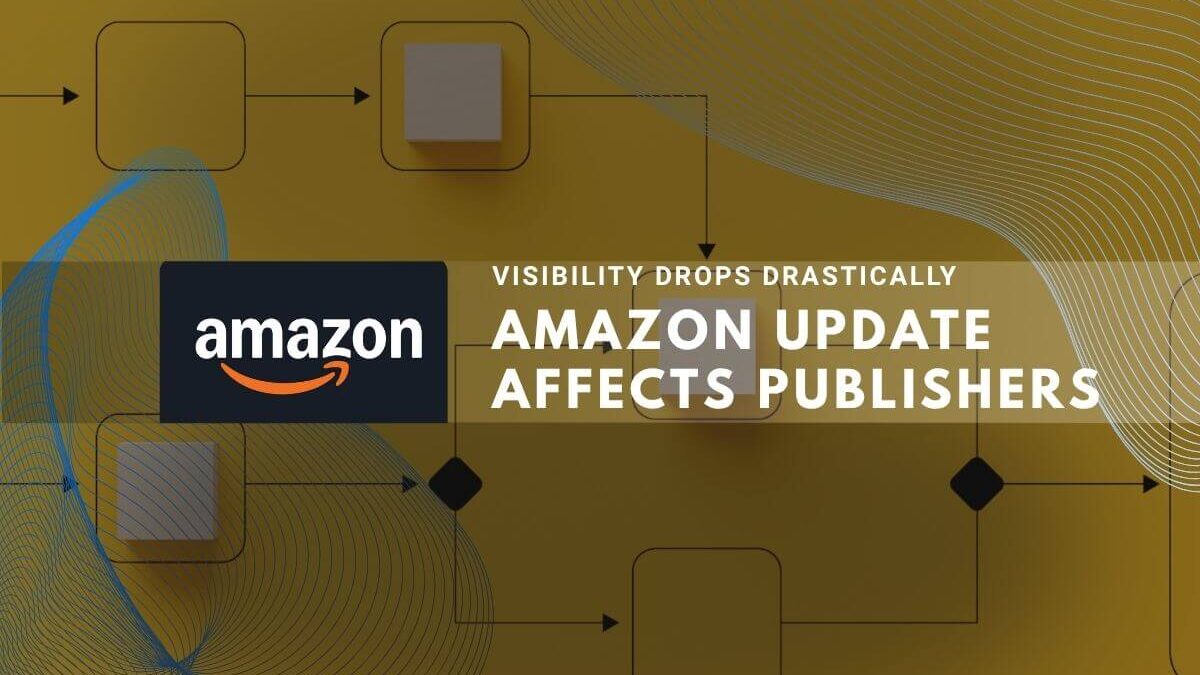Independent authors and digital-first publishers report significant revenue volatility following Amazon’s implementation of its updated A10 search algorithm, creating what industry leaders describe as unprecedented challenges for book visibility and sales performance.
Major Platform Changes Reshape Discovery Mechanisms
Amazon has completed a comprehensive rollout of its A10 algorithm system across all major book categories as of July 2025. The updated algorithm represents a fundamental shift in how books are discovered on the platform, with authors reporting substantial variations in visibility patterns compared to previous years.[1][2][3][4][5]
Orna Ross, director of the Alliance of Independent Authors, and Rachel McLean, indie crime author and founder of Ackroyd Publishing, are among publishing professionals highlighting concerns about algorithm modifications creating “increased volatility in visibility” for self-published works.[6]
Key Algorithm Modifications
The A10 system prioritizes several factors that differ substantially from previous ranking mechanisms:
| Algorithm Factor | A9 (Previous) | A10 (Current) | Impact on Indies |
|---|---|---|---|
| External Traffic | Minimal weight | Primary ranking factor | High – requires new marketing skills |
| Sales Velocity | Primary factor | Balanced with engagement | Medium – sustained performance valued |
| Paid Advertising | Direct ranking boost | Reduced algorithmic weight | High – PPC less effective for ranking |
| Seller Authority | Basic metrics | Comprehensive evaluation | High – established authors advantaged |
| Keyword Optimization | Heavy emphasis | Balanced with relevance | Medium – quality content prioritized |
External traffic from social media platforms, author websites, and email campaigns now carries substantial algorithmic weight, rewarding books that attract visitors from outside Amazon’s ecosystem. This represents a significant departure from the platform’s previous emphasis on internal metrics.[5][1][7]
Industry Impact Assessment
The digital publishing market, valued at $58.73 billion in 2025 with an 11.6% compound annual growth rate, faces potential restructuring as algorithm changes affect author visibility patterns. Independent authors control approximately 50% of the digital fiction market, making platform changes particularly significant.[8][9]
Current market dynamics show:
- Self-publishing market growth: Expected to reach $2.8 billion by 2033, with 8.1% CAGR[10]
- Amazon market dominance: Controls 67-83% of ebook sales globally[11]
- Daily publication volume: Over 4,000 books published daily on Amazon platforms[12]
- Author platform dependence: 80% of indie authors maintain websites, but less than 30% sell directly[13]
Professional Author Response
Rachel McLean, whose crime fiction series have sold over 2.5 million copies through her Ackroyd Publishing imprint, represents the scale of established indie operations now adapting to algorithmic shifts. McLean’s business model, employing seven freelance team members across publishing and marketing functions, demonstrates the professional infrastructure many successful indies have developed.[14][15][16]
The Alliance of Independent Authors’ 2025 income survey, currently collecting data from over 2,000 authors, aims to quantify the impact of platform changes on author earnings. Previous ALLi surveys documented median indie author incomes of $12,749 in 2022, with 28% earning over $50,000 annually.[17][18][19]
Technical Algorithm Analysis
The A10 system evaluates multiple engagement factors that previously carried minimal weight:
Customer Engagement Analysis:
- Time spent on book pages
- Click-through rates from search results
- Review quality and authenticity
- Reader interaction patterns
- Post-purchase behavior tracking
Seller Authority Assessment:
- Publishing consistency and reliability
- Customer service performance
- Return rates and customer satisfaction
- Overall account health metrics
- Historical performance data
Jane Friedman, prominent publishing industry analyst, noted that authors experiencing sales declines should understand that Amazon has “shifted fully to what’s known as the A10 algorithm, which deprioritizes traffic from paid advertising”. This change particularly affects authors who invested heavily in Amazon’s advertising ecosystem.[4]
Market Adaptation Strategies
Revenue Diversification Trends
Industry analysis indicates accelerating diversification among independent authors, driven partly by platform algorithm volatility:
Revenue Stream Distribution (2025 Independent Author Data):
- eBook & Kindle Unlimited: 60-80%
- Audiobooks: 10-20%
- Print books: 5-10%
- Direct sales & other: 5%
Source: Author revenue analysis and industry surveys[20]
Over 80% of authors now maintain websites for direct sales, while successful indies increasingly pursue crowdfunding, subscription models, and multimedia content strategies.[21][20]
Professional Development Requirements
The algorithm changes necessitate expanded skill sets for independent authors:
- External Marketing Proficiency: Social media engagement, email list building, and cross-platform promotion
- Content Quality Focus: Professional presentation standards, compelling descriptions, optimized metadata
- Analytics Understanding: Performance tracking across multiple platforms and traffic sources
- Community Building: Direct reader relationships through email lists and fan engagement
- Multi-Platform Strategy: Reduced dependence on single distribution channels
Financial Implications
Amazon implemented additional financial pressure on indie authors through KDP royalty reductions in June 2025, lowering print book royalties from 60% to 50% for titles priced below regional thresholds:[22][23]
| Region | Threshold Price | Currency | Impact Level |
|---|---|---|---|
| United States | $9.98 | USD | High |
| United Kingdom | £7.98 | GBP | High |
| Canada | $13.98 | CAD | Medium |
| Australia | $13.98 | AUD | Medium |
Source: Amazon KDP policy documentation[22]
These changes compound algorithm-related visibility challenges, creating dual pressure on author revenue streams.
Market Positioning Effects
Industry experts note that while algorithm changes create short-term disruption, they may benefit authors focused on authentic reader engagement over algorithmic manipulation. Long-term market positioning appears to favor:[24][1]
- Authors with established reader communities
- Professional presentation and content quality
- Sustained marketing efforts across multiple channels
- Diversified revenue streams beyond Amazon
Future Industry Implications
The algorithm modifications reflect broader platform strategy emphasizing customer experience and authentic engagement over algorithmic gaming. While creating immediate challenges for authors accustomed to previous optimization methods, the changes potentially reward sustainable business practices and genuine reader satisfaction.[1][7]
Publishing professionals recommend viewing these developments as acceleration of existing trends toward author entrepreneurship and platform diversification rather than temporary disruptions.[25][26][27]
The independent publishing sector’s response to these changes will likely determine market structure evolution, with successful adaptation requiring combination of creative excellence, professional business practices, and strategic marketing across multiple channels.
